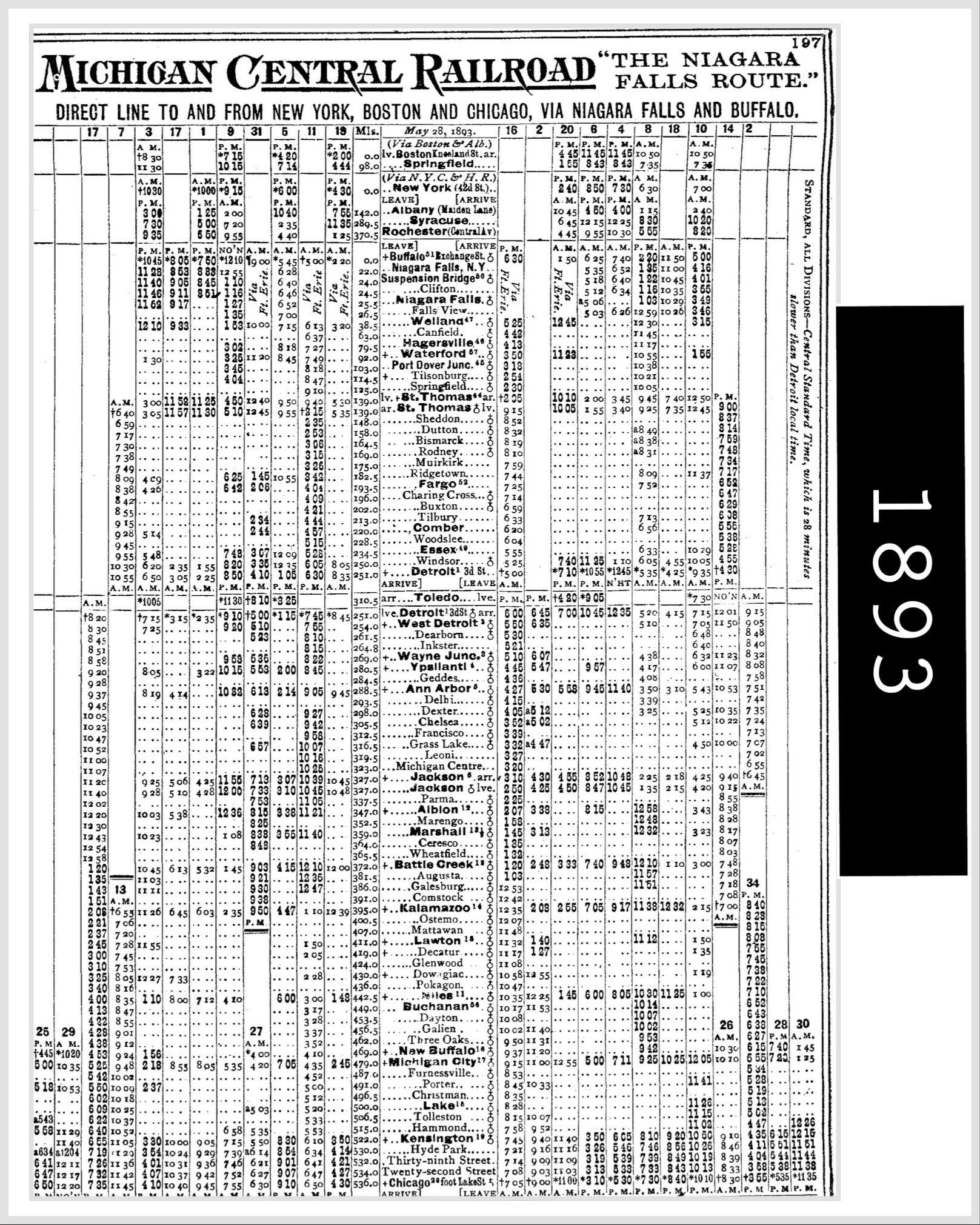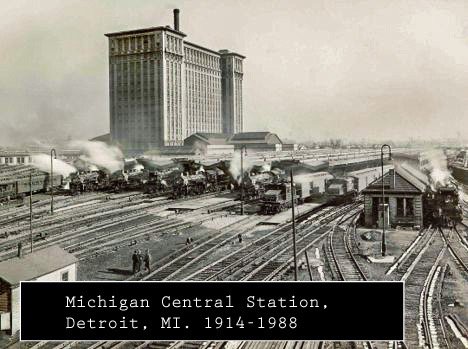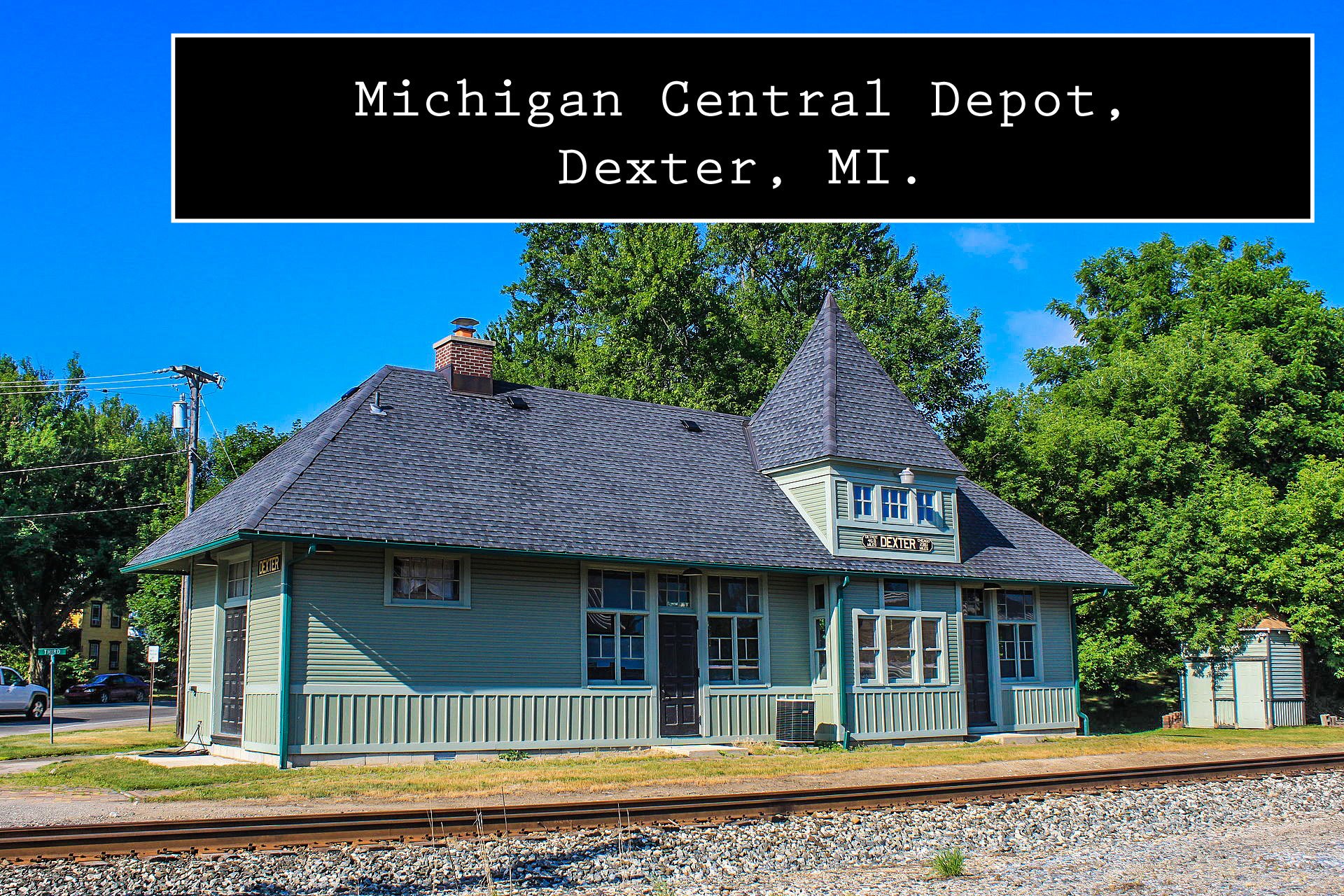Michigan Central RR & Detroit’s Central Station: The History & The Future //
Originally serving as the central station in Detroit’s intercity passenger rail system; Michigan Central Station (MCS) was built between June 1912 and December 1913 before its grand opening on January 4th, 1914. The structure, which was designed by both the Warren & Wetmore and Reed & Stem firms (of NYC’s Grand Central Terminal fame), is located southwest of Downtown Detroit in the Corktown District near the Ambassador Bridge, in which takes you over across the border into Windsor, Ontario.
With route conception dating back to 1832 on the Detroit & St. Joseph Railroad, It was in 1846, the official formation of the Michigan Central Railroad took place. After 1867, the tracking was acquired and operated by New York Central Railroad; further beefing up the track milage to an impressive 1,683mi (2,708km) by 1893. The Michigan state system expanded into the 20th century, weathering powder kegs of gatherings sparked by racism, worker union strikes, women’s suffrage protests, reform in the gold and silver standards, and let’s not forget prohibition. Despite weathering numerous movements, by 1925, New York Central Railroad operated a staggering 4,139mi (6,661km) across the regional system spanning from Buffalo, New York and Toronto, Ontario. Routing and branching its way through Ontario from the east to Windsor before crossing into Detroit.
Stepping off on 1 of 10 island platorms at Detroit’s Beaux-Art inspired, Michigan Central Station for a short stop over. Guests of all walks of life would be greeted to why Detroit’s station was the crown jewel in the Michigan Central Railroad’s state wide network Simply put, the variety of local, state, and regional route options of varying frequencies, trip times, and accommodations were presented! It sure didn’t hurt either that by the time Detroit Central was finished being built routes that spanned Michigan’s height and weight were in operation.
From Detroit’s Central Station services continued south towards Toledo, Ohio. To the north the main line continues on thru Bay City with spur route connections to Saginaw City, Lansing, Gladwin, and Grand Rapids.The main line extends to the furthest northern reaches of the lower peninsula in Cheboygan and Mackinaw City, Michigan. Additionally, train-to-port connections could be made to the Upper Peninsula to St. Ignace and Manistique. with a separate port service provided connecting Mackinaw City and Mackinac Island.
The northwest part of state has always been rural historically, and at this time smaller short line railroads serviced connections most notably from Grand Rapids and Saginaw City. These connections allowed for streamlined and easy mobility for farther flung places in the state like; Traverse City, Cadillac, Big Rapids, Muskegon, and Flint.
In Detroit riding the line east through Jackson, Kalamazoo, and eventually as the main line curves, a branch line to Lake Michigan’s shore, ports, and dune is offered. The final terminus of this branch arrives in South Haven, Michigan, with port shuttle access to boot. However sticking on the main line brings you towards Niles, MI; as the Indiana state line comes soon after. In Indiana, a branch line to South Bend/Notre Dame can be taken for local service OR you could take the line further on with stops on the southern shores of Lake Michigan before arriving at the system’s western terminus in Chicago.
As for Detroit’s Michigan Central Station, the Great Depression was the first real blow after the years of growth in rail travel that began just before the US got involved in WWI. However, in the beginning it was a slow decline as during WWII the station was used heavily by military troops. Obviously that was short lived and as soon as the war was over car ownership spiked and passenger rail numbers took a nose dive. Detroit also decided to implement urban freeways including both I-96 and I-75; the latter of which cut through the Corktown neighborhood and surrounded the station. Businesses and ticket windows shuttered and services were cut. NY Central croaked and was bought by Penn Central. Finally, the entire US passenger rail industry croaked and Amtrak took over operation in 1971. After running 4 different routes out of the station and doing minor maintenance to the building; the last train pulled away from the station on January 6th, 1988.
The new and absolutely bland Detroit Amtrak Station opened in 1994 across town and Michigan Central Station lie dormant through proposals and a city wide bankruptcy in 2013. Finally, on May 22nd, 2018, Ford Motor Company bought the building in conjunction with MCS Crown Land Development. As Detroit slowly regains its economic potential Ford plans to turn the building into a hub for autonomous vehicle development and testing. In addition, the old station will be turned once again into a public space to be enjoyed by all; housing offices, event and performance spaces, public art gallaries, restaurants, and retailers. While Ford had a hand in killing the station; this could become a second wind for a place that could move Detroit in a promising direction. As part of a phased approach, the building is scheduled to open with initial occupants in July 2023. As of May 2023, outside lighting is almost finished as final maintenance is being put on the building.
For More Information on Station Redevelopment //
https://michigancentral.com/development/
https://historicdetroit.org/buildings/michigan-central-station















